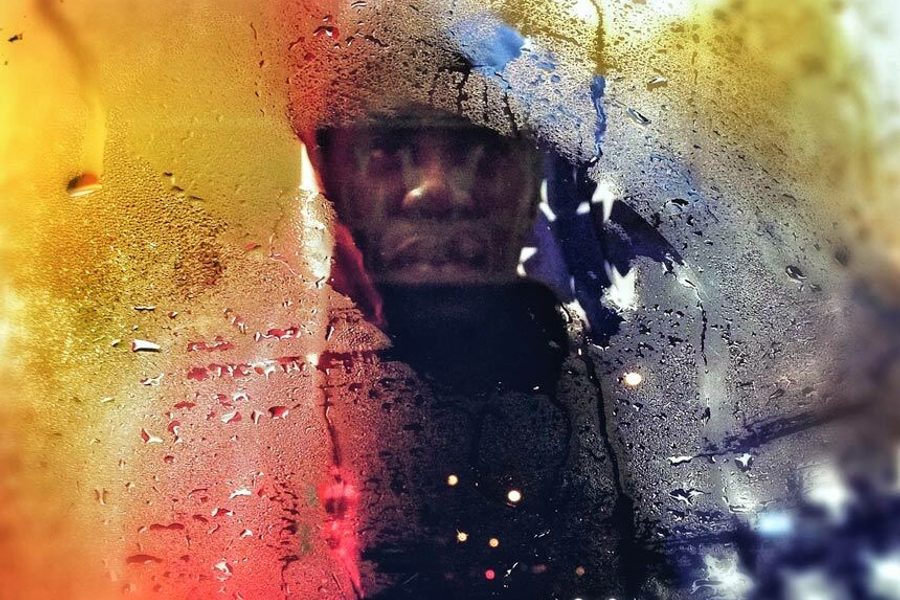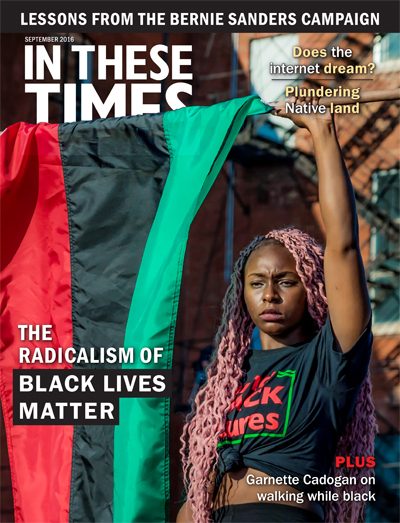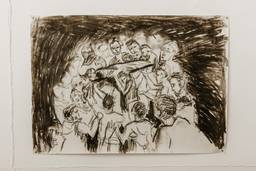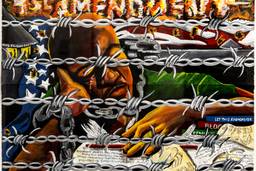
This is an excerpt of an essay that first appeared in Freeman’s in September 2015.
My love for walking started in childhood, out of necessity. No thanks to a stepfather with heavy hands, I found every reason to stay away from home and was usually out — at some friend’s house or at a street party where no minor should be — until it was too late to get public transportation. So I walked.
The streets of Kingston, Jamaica, in the 1980s were often terrifying — you could, for instance, get killed if a political henchman thought you came from the wrong neighborhood, or even if you wore the wrong color. Wearing orange showed affiliation with one political party and green with the other. No wonder, then, that my friends and the rare nocturnal passerby declared me crazy for my long late-night treks that traversed warring political zones.
I made friends with strangers and went from being a very shy, awkward kid to being an extroverted, awkward one. The beggar, the vendor, the poor laborer — those were experienced wanderers, and they became my nighttime instructors; they knew the streets and delivered lessons on how to navigate and enjoy them. The streets had their rules, and I loved the challenge of trying to master them. I learned how to be alert to surrounding dangers and nearby delights, and prided myself on recognizing telling details that my peers missed. I’d navigate away from a predatory pace, and speed up to chat when the cadence of a gait announced friendliness.
I imagined myself a Jamaican Tom Sawyer, one moment sauntering down the streets to pick low-hanging mangoes that I could reach from the sidewalk, another moment hanging outside a street party with battling sound systems. The streets had their own safety: Unlike at home, there I could be myself without fear of bodily harm. Walking became so regular and familiar that the way home became home.
****
I arrived in New York City in 2005, an adult ready to lose myself in Whitman’s “Manhattan crowds, with their turbulent musical chorus!” I marveled at what Jane Jacobs praised as “the ballet of the good city sidewalk” in her old neighborhood, the West Village. I walked up past midtown skyscrapers, releasing their energy as lively people onto the streets, and on into the Upper West Side, with its regal Beaux Arts apartment buildings, stylish residents and buzzing streets. Onward into Washington Heights, the sidewalks spilled over with an ebullient mix of Jewish and Dominican-American residents, up to my home in Kingsbridge in the Bronx, with its rows of brick bungalows and apartments. When I wanted a taste of home, I headed to Brooklyn, in Crown Heights, for Jamaican food and music and humor. The city was my playground.
But it wasn’t long before reality reminded me I wasn’t invulnerable.
One night in the East Village, I was running to dinner when a white man in front of me turned and punched me in the chest with such force that I thought my ribs had braided around my spine. I assumed he was drunk, but found out soon enough that he’d merely assumed because of my race that I was a criminal running up behind him.
I blew off this incident as an aberration, but the mutual distrust between me and the police was impossible to ignore. It felt elemental. They’d enter a subway platform; I’d notice them. (And I’d notice all the other black men registering their presence as well, while just about everyone else remained oblivious to them). They’d glare. I’d get nervous and glance. They’d observe me steadily. I’d get uneasy. I’d observe them back, worrying that I looked suspicious. Their suspicions would increase. We’d continue the silent, uneasy dialogue until the subway arrived and separated us at last.
I had taught myself a set of rules: No running, especially at night; no sudden movements; no hoodies; no objects — especially shiny ones — in hand; no waiting for friends on street corners, lest I be mistaken for a drug dealer; no standing near a corner on the cell phone (same reason). As comfort set in, inevitably I began to break some of those rules, until a night encounter sent me zealously back to them, having learned that anything less than vigilance was carelessness.
After a sumptuous Italian dinner and drinks with friends, I was jogging to the subway at Columbus Circle — I was running late to meet another set of friends at a concert downtown. I heard someone shouting and I looked up to see a police officer approaching with his gun trained on me. “Against the car!” In no time, half a dozen cops were upon me, chucking me against the car and tightly handcuffing me. “Why were you running?” “Where are you going?” “Where are you coming from?” “I said, why were you running?!” Since I couldn’t answer everyone at once, I decided to respond first to the one who looked most likely to hit me.
The cops ignored my explanations and my suggestions and continued to snarl at me. All except one of them, a captain. He put his hand on my back and said to no one in particular, “If he was running for a long time he would have been sweating.” He then instructed that the cuffs be removed. He told me that a black man had stabbed someone earlier two or three blocks away and they were searching for him.
The police captain said I could go. None of the cops who detained me thought an apology was necessary. They seemed to think it was my own fault for running.
Humiliated, I tried not to make eye contact with the onlookers on the side walk, and I was reluctant to pass them to be on my way. The captain, maybe noticing my shame, offered to give me a ride to the subway station. When he dropped me off and I thanked him for his help, he said, “It’s because you were polite that we let you go. If you were acting up it would have been different.” I nodded and said nothing.
I realized that what I least liked about walking in New York City was the arbitrariness of the circumstances that required “rules,” an arbitrariness that made me feel like a child again, that infantilized me. When we first learn to walk, the world around us threatens to crash into us. Every step is risky. We train ourselves to walk without crashing by being attentive to our movements, and extra-attentive to the world around us. As adults we walk without thinking, really. But as a black adult I am often returned to that moment in childhood when I’m just learning to walk. I am once again on high alert, vigilant. Much of my walking is as my friend Rebecca once described it: a pantomime undertaken to avoid thechoreography of criminality.
****
Walking while black restricts the experience of walking. Instead of meandering aimlessly in the footsteps of Whitman, Melville, Kazin and Gornick, more often, I felt that I was tiptoeing in Baldwin’s — the Baldwin who wrote, way back in 1960, “Rare, indeed, is the Harlem citizen, from the most circumspect church member to the most shiftless adolescent, who does not have a long tale to tell of police incompetence, injustice, or brutality. I myself have witnessed and endured it more than once.”
Walking has made me feel simultaneously more removed from the city, in my awareness that I am perceived as suspect, and more closely connected to it, in the full attentiveness demanded by my vigilance. It has made me walkmore purposefully in the city, becoming part of its flow, rather than observing, standing apart. Walking — the simple, monotonous act of placing one foot before the other to prevent falling — turns out not to be so simple if you’re black.
A version of this essay also appeared in The Fire This Time: A New Generation Speaks About Race, edited by Jesmyn Ward and reviewed in the September 2016 issue of In These Times.





